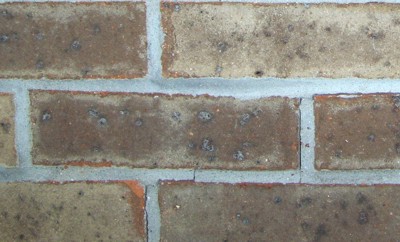Brick Wall Leakage
DEAR TIM: We live in a five story multi-family brick building built in 1903. the building is right off of Lake Michigan. Our east side gets intense winds, and has had a chronic water issue in a bay area with literally buckets of water coming into the north-facing bedroom window area and first east-facing window of two windows in the dining room.
These two windows are on a bay corner of our building, with the east windows indented between the north and south windows to bedrooms. The fifth floor has water on the ceiling near their east window but no other water damage. The fourth floor has no problems. The third floor tenant has ceiling damage above the east window and needed to put a plastic shunt from above the window into a large garbage can to collect water during storms. She also has water coming in, not quite as much, into her north-facing bedroom window.
This water damage is relatively new (at least we think, and has gotten worse over the last year). The second floor has had CHRONIC WATER for over ten years, with a little respite after tuck-pointing. The second-floor tenants get significant water in the same two windows as the third unit and are also starting to get ceiling damage. The first-floor unit has the worst problem -- but it is similar in structure to three and two.
We have had our walls regularly tuck-pointed and the bay ground out and repointed, but it hasn't solved the problem. We had our windows glazed and then redone because our tuck-pointers felt the way the glazing was done wasn't right. We had the sills in some of the windows reset and are considering having unit owners replace their north facing windows as a potential culprit.
These windows were replaced in the past to solve the problem (over 15 years ago), but no one recalls how well that helped. The second-floor tenants replaced their window, but it didn't correct the problems.
We have had our parapet wall on the bay rebuilt about ten years ago and a new roof put on also about eight years ago. At that time we took off a lot of tar and roofing materials to re-expose our brick so it could breath and had our interior parapet wall retuck-pointed too. The coping tiles were looked at, and some were sealed -- but that didn't help either. Our regular tuck-pointers can't figure it out and the second "water whisperer" tuck-pointer/builder company also tried a few things but it hasn't corrected the trouble.
Our tuck-pointers now think we should put a sealant on the wall, because they think the water is coming through the bricks. Given the amount of water we get I think this is improbable as we've sprayed down the wall and not been able to recreate the water effect. I wonder if there might be a corner on our flat roof where water is collecting and going down, but everything looks intact. Also, at some point over 15 years ago, and before my time in the building, a sealant (looks like a mortar type seal, but no one recalls what it is) was put on the wall. It is now peeling off at points but the wall has been tuck-pointed actively (every year or two). We have thrown a lot of money, time and effort at this wall and are not sure what to do. Can you HELP? Karen D., Chicago, IL
DEAR KAREN: I am convinced you are a victim of wind-blown rain that is squeezing through the contact zone where the mortar touches the brick. It is a known fact in the industry that this happens.

Note the small vertical crack next to the center brick. PHOTO CREDIT: Roger Henthorn
As for the volume of water, you would be shocked how much water is hitting your building during a severe wind-blown rain. You were not able to recreate the leak with the hose, because you were lacking the pressure caused by the wind.
Imagine what happens when each rain drop slams against the brick. Each droplet is like a miniature hammer. It applies pressure to the water that had just hit moments before. Each subsequent drop drives the cumulative water deeper and deeper into the brick.
To prove wind-blown rain is the cause, note what happens when you get several very gentle rain showers that fall pretty much straight down from the sky. My guess is you will see no leakage.
The sealant is indeed the solution. You need to apply the absolute best silane / siloxane water repellent to the entire exterior of the building. You may need two coats. Some of these sealers must be applied in two thin coats separated by a very short amount of time. If the first coat dries, the second coat is repelled by the first coat. Whatever product you decide to buy, you must read the instructions and monitor the contractors so they apply it exactly as is indicated by the manufacturer.
Column EM0050
2 Responses to Brick Wall Leakage